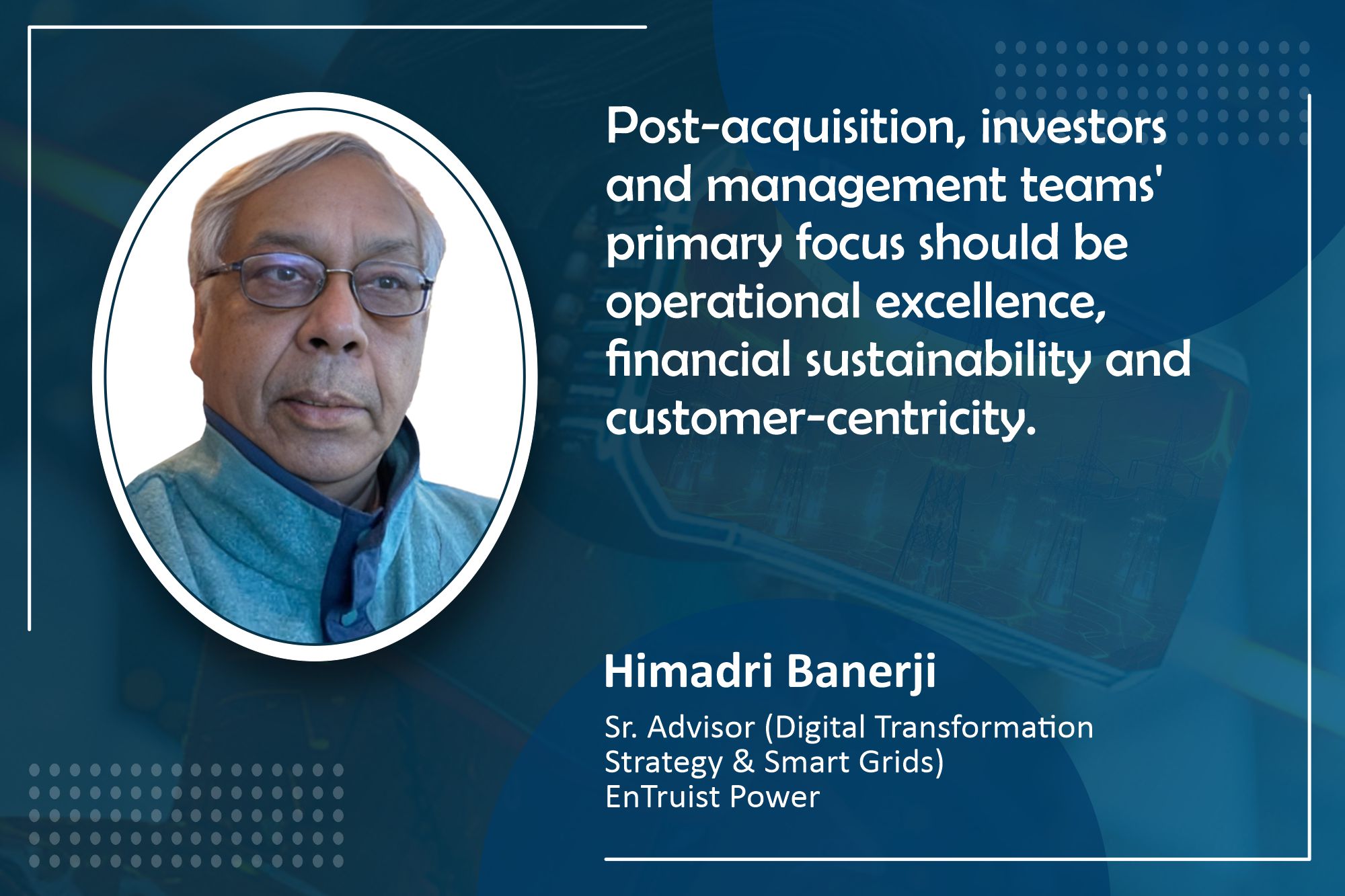Post-acquisition strategy for enhancing power distribution utilities
By EPR Magazine Editorial March 4, 2025 2:02 pm IST
By EPR Magazine Editorial March 4, 2025 2:02 pm IST

Privatisation and acquisitions in the power distribution sector have been critical in driving efficiency, improving service reliability and fostering sustainability. Having led the transformation of key utilities such as Ahmedabad Electricity Company under Torrent Power and Delhi’s BRPL and BYPL, I have firsthand experience in executing post-acquisition strategies that result in operational excellence.
Post-acquisition, investors and management teams’ primary focus should be operational excellence, financial sustainability and customer-centricity. The overarching goal is to create a digitally enabled, financially viable, and customer-focused power distribution company. To achieve this, the following five objectives must be pursued: reducing Aggregate Technical & Commercial (ATC) losses from high levels to global benchmarks of 5-8 percent, enhancing revenue collection by increasing billing and collection efficiency to 95-98 percent. Promoting digitalisation to enable at least 50 percent of customer interactions through digital channels, improving service quality by reducing complaint resolution time to within 12 hours and deploying smart metering for at least 30 percent of consumers to enhance efficiency and transparency is essential.
Despite progress, the Indian power distribution sector continues to face significant challenges. ATC losses remain high at 16.5-20 percent compared to global standards. Nearly 70 percent of Discoms operate at financial losses and customer interactions remain largely offline (80 percent). Collection efficiency is below the required 98-100 percent, and smart meter penetration is only 8.5 percent. Addressing these issues requires a structured and phased transformation strategy.
The first phase of transformation focuses on loss reduction and revenue enhancement, spanning the first eight months. This includes smart meter deployment, GIS-based asset mapping, AI-driven power theft detection, and strengthening of digital payment infrastructure. The goal is to achieve a 25 percent reduction in ATC losses requiring a capital investment of INR 100-250 crores. The second phase involves launching mobile apps and customer portals integrating WhatsApp for customer service, enhancing digital payment options and implementing real-time outage management. This phase, spanning months 9-16, requires an investment of INR 50-75 crores with an expected ROI of 40 percent. The third phase, i.e. operational excellence, begins in months 17-24. It includes workforce management system implementation, predictive maintenance adoption, real-time analytics dashboard creation and achieving a 30 percent improvement in workforce productivity.
Certain enablers must be in place for a successful transformation. These include state government and policy support, change management and workforce training, robust IT infrastructure, vendor ecosystem development, and consumer awareness programmes. Implementation steps involve establishing a state-level Digital Transformation Committee to secure central government funding, procuring and deploying smart meters, launching consumer awareness campaigns, and utilising project management tools like Primavera to track progress.Key performance metrics for success include reducing ATC loss to below 10 percent, improving collection efficiency to 98-100 percent, increasing digital transaction volume to at least 50 percent, achieving smart meter penetration of 30 percent, increasing reliance on renewable energy sources like solar and wind, and reducing overall operational costs with enhanced customer satisfaction.
Post-acquisition transformation of electric utilities is a complex yet necessary process. It requires a well-defined strategy integrating digitalisation, financial discipline, operational efficiency, and sustainability commitments. By focusing on these core areas, India’s power distribution sector can move towards global reliability, efficiency and consumer satisfaction standards. The key to success lies in structured implementation, robust project management and a relentless focus on customer-centric innovations.
We use cookies to personalize your experience. By continuing to visit this website you agree to our Terms & Conditions, Privacy Policy and Cookie Policy.